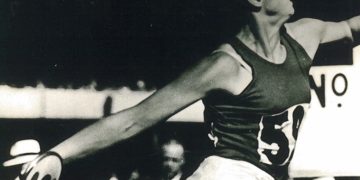Last week, @runblogrun featured Reebok’s ZAP Fitness coach, Pete Rea as we questioned him about the fine performance of Tyler Pennel (4th), Nicole DiMercurio (6th) and Joanna Thompson (10th) in the elite race.
During our conversation, I asked Coach Rea if Joanna Thompson, who had spoken to me about writing before, would care to write about her experiences in Boston. A few days later, Joanna emailed me and a I asked for a story. And yesterday, the story arrived.
RelatedPosts
Here is a funny, poignant piece by elite tenth placer Joanna Thompson on her excellent adventure from Hopkinton to Bosoton on April 16, 2018.
Nicely done, Joanna.
 Joanna Thompson, BAA 5k, 2016, photo by PhotoRun.net
Joanna Thompson, BAA 5k, 2016, photo by PhotoRun.net
As an athlete, there are times when everything comes together on race day: perfect training, perfect taper, perfect weather.
The 2018 Boston Marathon was not one of those days.
In the weeks leading up to the race, ZAP Fitness’s head coach, Pete Rea, scrupulously avoided checking the weather. Boston, like much of the East Coast, had suffered a tough winter, and if conditions were bad he didn’t want to psyche my teammates and me out before we even set foot to the start line.
Still, it was almost impossible to ignore the rumblings of a potential deluge. By the time we reached Massachusetts bad weather looked like a sure thing.
“Listen,” Pete said in our pre-race meeting, “It’s just not going to be PR conditions out there…well, actually for you, it might.”
My sole previous marathon attempt had been the 2016 Olympic Trials, where due to brutal heat and lack of experience, I imploded spectacularly.
“Regardless, I don’t want you worrying about time tomorrow. Even if you miss your time goal, you can still have a great race.”
He emphasized how well the build up had gone for all of us. This race was months in the making, and there was no reason to write it off because of a little rain.
@jojofoshosho0 now well past 20 climbing #heartbreak
A post shared by ZAP Fitness (@zapfitness_reebok) on
With that in mind, my revised race plan remained fairly similar to what it had been: start conservatively, run steadily over the hills, and focus on moving forward over the last 10k. To offset the conditions, I was to tuck in wherever possible, “even if that means running a couple seconds per mile slower than you want”.
Finally, the coup de gras: olive oil.
Which is how less than twenty-four hours later, I found myself slathering extra virgin over every inch of exposed skin. Minutes later, we were ushered to the starting line. The gun fired. The crowd cheered. We were on our way.
Mile one was tactically slow. I experienced a brief moment of panic when, looking around, I discovered I was leading. Luckily, I was able to back pedal and tuck in before I got trapped out front. Keeping Pete’s advice in mind, I found a pack with whom I could trade leads for several miles. It’s a good thing I did. The already punishing course saw unprecedented winds this year, with a relentless 20 mph headwind punctuated by occasional 30 mph gusts. That, in combination with cold, stinging rain made any kind of alleviation from fellow runners welcome.
To my relief, the olive oil helped: it not only provided a thin layer of waterproofing, but also made our skin look amazing in mid-race photos (maybe the ancient Greeks were on to something).
Mid-race, it was impossible to get a sense of placing – my field of vision shrunk to the narrow strip below my hat’s brim. I could have been fifth or fiftieth and never known the difference. So instead of counting competitors, I focused on running steady and making sure I grabbed the right water bottle at each fluid station.
From miles 13 to 17, there was only one goal: make it to the Newton hills with something left in the tank. Spanning miles 17.5 through 21, the Newton hills are a one-two-three punch to the quads culminating at the pinnacle of Heartbreak. I knew that if I could power over the top in (relatively) good shape, I would be able to make it to the finish line.
Then suddenly I was at mile 25. My legs were entirely numb – a small mercy. We turned on to Boylston for the final half mile and the finish line looked like the gates of heaven. I think I heard an angelic chorus as I crossed. To my immense shock, I’d finished tenth.
Those 26.2 were a lesson in persistence, preparation, and collaboration. There are moments in any race when quitting seems like a great option. But, provided you aren’t injured or in danger of physical collapse, seeing the race through – even a brutal one – pays off.
Blowing Rock, where we live and train, is aptly named. We often find ourselves training in cold, wet, extremely windy conditions. Which can suck sometimes; but it is also fantastic preparation for battle against the elements. From now on, I’ll strive to embrace all weather, whether good, bad, or ugly.
As for collaboration, I think it’s impossible to go through something as grueling as 26.2 miles and not feel a primordial bond with your fellow runners. Des Linden embodied that spirit perfectly.
I don’t know if I would have finished (and certainly I wouldn’t have finished well) if not for the little pack of women with whom I spent the first 16 miles. I wouldn’t have been able to train at the level I do without my teammates’ and coaches’ support. And the entire marathon field would have been so, so much poorer if not for the intrepid Bostonians who braved the deluge to volunteer or cheer for us.
The weekend’s hashtag summed it up: in marathoning, we’re all moving together, forward.
For more reading:
Pete Rea speaks on ZAP Fitness performances at Boston
Introducing Reebok FloatRide RunFast Pro, video by The Shoe Addicts





















